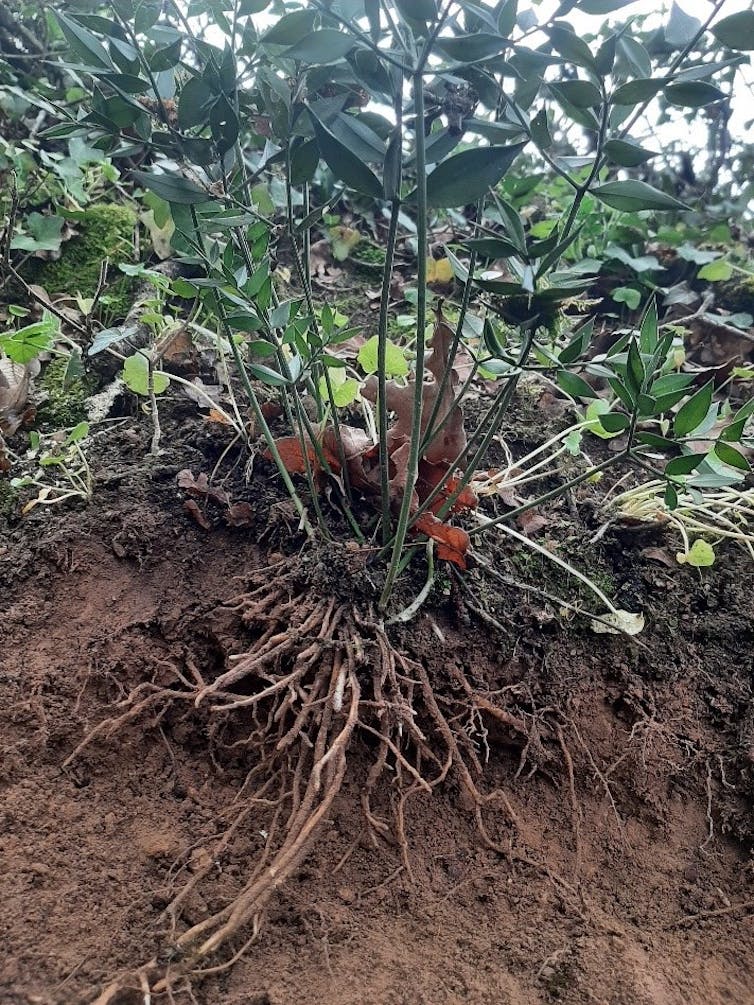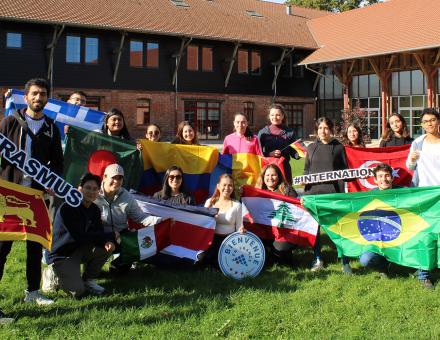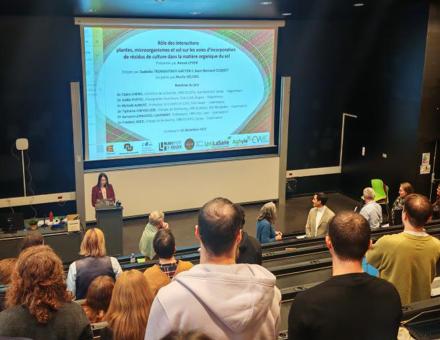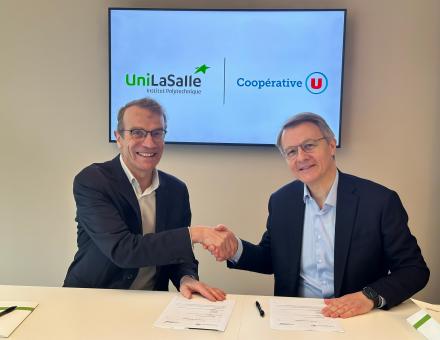Discover the new article by Michel-Pierre Faucon, David Houben & Murilo Veloso, teacher-researchers at UniLaSalle, for The Conversation.
The soaring price of nitrogen fertilizers (400% increase in 18 months) and the risk of shortages projected for next spring due to energy supply difficulties could accentuate food security problems in many regions of the world. In this context, questions about soil-root interactions are receiving renewed interest today.
These hidden underground organs, which are essential to the life of plants and many soil organisms, are at the heart of agroecology research. The objective is to capitalize on the complementarity of roots for the occupation of space and the acquisition of water and nutrients in order to better exploit the heterogeneous natural resources of the soil, and to reduce the contribution of inputs (the contribution of materials exogenous to the agrosystem such as synthetic fertilizers or those of mining origin) and the greenhouse gas emissions associated with their use, while promoting the storage of carbon in the soil.
Soils by definition are heterogeneous physically, chemically, biologically, horizontally and vertically. This heterogeneity exists from the scale of the infinitesimal to that of the landscape and even more so, passing through that of the pedon (a three-dimensional unit on the surface of the earth considered as soil) or of the plot.
At the microscopic scale, soils are heterogeneous because of the diversity of chemical forms of the mineral elements found in them, but also because of the variation in the size of the soil aggregates (a few tenths of a millimeter to a few millimeters) formed by the association of minerals, bacteria or fungal hyphae and organic matter, which together constitute the soil.
Soils offer a diversity of habitats and ecological niches for living organisms. This diversity of ecological niches in plants is explained by the diversity of roots, their ability to modify their characteristics in response to changes in soil properties and their heterogeneity (called phenotypic plasticity).
This wide diversity of root functional characteristics (morphological, architectural, physiological, biotic interactions) appears to be more important than at the level of aerial parts (stems and leaves) within the plant kingdom. It would even be the result of the evolution of soil-plant interactions, and of the response of plants to soil heterogeneity. Knowledge of the functional role of roots and their responses to soil properties and heterogeneity has increased over the last decade.
Roots for a diversity of chemical forms of mineral elements
Plants possess a diversity of nutrient acquisition strategies that often underlie the differentiation of their ecological niche in response to soil chemical variability (e.g., spatial variation in nutrient concentrations and chemical forms).
This variation in soil properties is an important factor in the formation of soil plant, animal, and microbial communities (species assemblages), particularly in low fertility (nutrient deficient) soil contexts where competition for light is not the primary factor responsible for community structuring.
For example, low nitrogen availability in soils is a favorable condition for legumes because of their symbiosis with atmospheric nitrogen-fixing bacteria that ensures their nitrogen autonomy. Conversely, areas rich in nitrogen are occupied preferentially by species that do not benefit from this symbiosis (grasses, species of the cabbage family, etc.) and are therefore more dependent on the nitrogen available in the soil. These plants maximizing nitrogen acquisition have common strategies for water acquisition since the available nitrogen is mobile and is transported by vertical water flows in the soil. They will exhibit specific root architecture including deeper roots.
Although essential to plants, phosphorus is often not readily available in soils. In order to obtain and benefit from it, species and varieties have developed different mechanisms to mobilize the forms of phosphorus that are not available in the soil: some mobilize the organic forms of phosphorus, others the inorganic forms associated with soil minerals.
The diversity and proportion of chemical forms of phosphorus vary from one soil to another and can explain the coexistence of plant species in nutrient-deficient conditions. At the scale of a soil volume of a few cubic centimeters or of a plot, spatial heterogeneity of nutrient levels (especially nitrogen and phosphorus, major plant nutrients) exists.
Thanks to the morphological and architectural diversity of their roots, some plants (such as many grass species) can preferentially explore the microzones richest in available phosphorus; this is particularly the case for those with a long root length and a high density of absorbing hairs (wheat, rye, oats, grassland grasses, etc.).
On the other hand, those that do not invest in root length occupy the least fertile spaces by mobilizing unavailable phosphorus (species of the cabbage family: mustard, radish...) or by associating with symbiotic fungi (mycorrhizae), for example, plants of the pea family (clovers, alfalfa...). This diversity of nutrient acquisition strategies implies complementarity between plant species, and even facilitation when one provides a service to its neighbor.
Capitalizing on these positive interactions between plant species made possible by the chemical heterogeneity of soils is an opportunity to develop crop systems that are species-diverse, productive and low in inputs.
Mineral heterogeneity for soil carbon storage
The heterogeneity of soil minerals at depth modifies the soil structure and induces heterogeneity in the distribution of stable organic carbon in the soil, since it is the carbon molecules fixed by the minerals (such as clays and iron oxides) that are the most stable over time, constituting a key fraction for carbon sequestration in the soil and climate change mitigation

Thick root (diameter greater than 2 mm) of a plant conserving its resources (sugars and nutrients), the little holly fragon. Julie Loiseau, Provided by the author
This soil heterogeneity can be accentuated by the contribution of carbon in depth by the roots directly or by mycorrhizal fungi in association with most plants, with the exception of plants of the cabbage and rape family, and of the beet and spinach family, and some modern varieties of cereals which have lost this natural capacity during the work of selection by Man.
These plants, thanks to their mycorrhizal fungi, are able to explore deep into the soil (sometimes beyond one meter) and thus bring carbon by releasing small organic molecules or replacing the hyphae of the fungi (cylindrical filaments that constitute the body structure of multicellular fungi). This carbon brought deep into the soil by the fungi will be stable over time given the low oxygen levels.
For a diversity of agroecological solutions
Knowledge of the functional role of roots has intensified over the last decade and is beginning to interest agronomists, breeders and seed producers who see it as a lever for adapting crops to climate change and for reducing synthetic fertilizers (expensive and with negative environmental externalities). It constitutes a basis for the development of agroecology since it participates in soil conservation and makes it possible to rethink fertilization practices by reducing the use of synthetic or fossil fertilizers.
Highlighting the role of soil heterogeneity in soil-plant interactions leads to a rethinking of the selection of crop varieties. Historically, breeding has focused on the above-ground parts of crops under homogeneous and conventional growing conditions without water and nutrient deficits and under fertilization.
The current challenge is to mobilize this new knowledge to select root traits that are favorable to low-input plant growth. The challenge is to grow crops while reducing greenhouse gas emissions and cutting production costs.
We can rethink agricultural practices by combining different types of genetically fixed plants in the same crop to explore and benefit from soil heterogeneity, or several species that complement each other in their characteristics and functions (providing nitrogen naturally, mobilizing soil phosphorus, promoting soil structure, etc.).
These multi-species crops are currently being implemented by a few experienced farmers as part of simultaneous annual crop associations, perennial and annual crops (i.e., agroforestry), relay crops (e.g., soybeans in a winter barley crop before harvest), and intermediate crops (as a green manure, or harvested crop for fodder or methanization). The development of these crops diversified in species or varieties requires a fine technical knowledge and an adaptation of agricultural machinery (seeders, tractors...).
For example, the coexistence of these species requires a low competition for light, which will be managed by a good definition of the sowing density of each of these species (the tallest species will be sown less densely) and/or of the distance between the rows of sowing. All this knowledge and applications depend on the interdisciplinary work produced thanks to the collective intelligence between soil scientists, ecologists, agronomists, experimental farmers, specialists in agricultural techniques and machinery and seed breeders. The densification of this collective work between scientists and agricultural development actors will accelerate the agro-ecological transition in this context of resource scarcity and climate change.The Conversation
Michel-Pierre Faucon, Lecturer-researcher in plant ecology and agroecology - UniLaSalle Beauvais Research Director, UniLaSalle; David Houben, Lecturer-researcher in soil science and Director of the College of Agrosciences, UniLaSalle and Murilo Veloso, Lecturer-researcher in soil science, AGHYLE Unit, Rouen Campus, UniLaSalle
This article is republished from The Conversation under a Creative Commons license. Read the original article.






